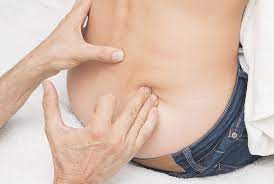Leg length discrepancy
Functional leg length discrepancy (FLD) is a relatively common condition that affects the hips and legs. The causes for this condition are a combination of muscle tightness, imbalanced movement patterns, and inflexibility. In particular, the discrepancy affects runners and other people who regularly run on uneven surfaces. These individuals are at risk of developing lower back pain, neck and shoulder problems, and improper weight distribution.
Poor posture
If your pelvis is out of balance, you may have uneven hips. Poor posture may be the cause, but it is not the only contributing factor. It can also cause knee and foot pain. It can cause muscle and ligament dysfunction, and eventually lead to low back pain. Here are some tips for correcting your posture to help prevent and treat uneven hips. Read on to learn more about the common causes of uneven hips and how to fix them.
Weight gain
The first step to fixing uneven hips and weight gain is to determine if your muscles are tight. Tight muscles can shift your bones and change your body structure. People who work in a desk job or spend most of their days in a car tend to have tight muscles that are often the cause of uneven hips. One muscle in particular is the Quadratus Lumborum, which is responsible for uneven hips.
Crossing your legs
If you’ve been wondering how to fix uneven hips, there are a few exercises you can try. One is the prickly Velcro dot trick. To practice this exercise, you’ll need to find a spot on your leg that has a little prickly Velcro on it. Then, cross your leg over that spot until you feel the prickly sensation. It takes about a day of practice to become accustomed to crossing your legs.
Scoliosis
Chiropractic doctors are trained to diagnose spinal conditions. Family doctors may not be as comfortable with evaluating such conditions, and may have limited experience in treating them. Chiropractors perform spinal examinations, orthopedic tests, and full-spine x-rays. Chiropractic spinal adjustments and related therapy can help relieve symptoms in many cases. If treatment fails, chiropractic care may be your best option. Learn more about chiropractic care and treatments for scoliosis and uneven hips.
Exercises to correct pelvic tilt
A lateral pelvic tilt can be either structural or functional. A structural pelvic tilt is caused by leg length discrepancy or scoliosis, while a functional pelvic tilt may be due to muscle imbalance or compensation. In either case, correcting the tilt will require strengthening the muscles in your gluteus region. These exercises can also improve your hip mobility. For more information, contact your physical therapist.
Scoliosis surgery can’t fix uneven hips
While the symptoms of scoliosis are largely the same, the extent of the problem can differ. Uneven hips, or lateral pelvic tilt, are often a sign of scoliosis. Uneven hips result from the abnormal curvature of the spine, which pulls on the pelvis and ribs. Because the causes and extent of the condition vary, treatment options must be tailored to the individual patient.

